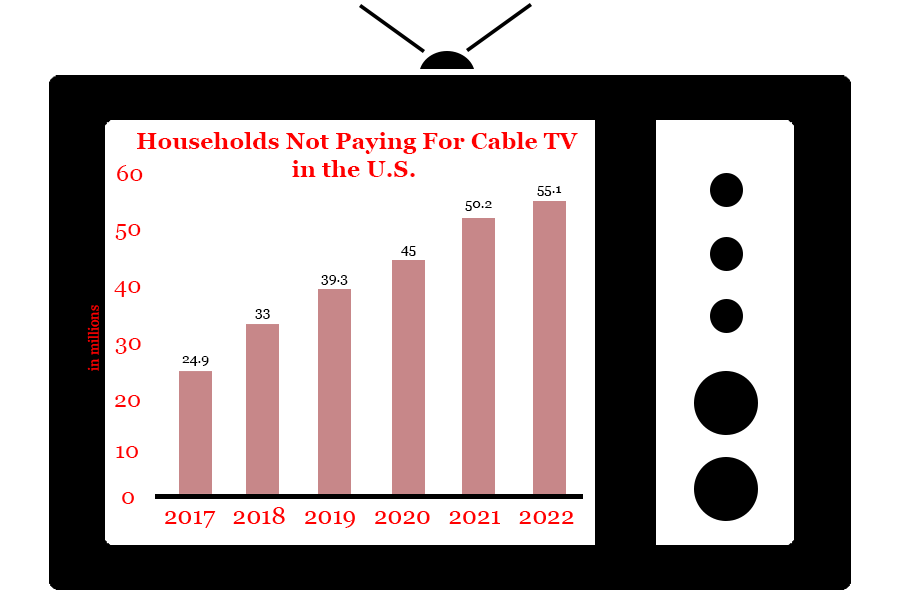Interest in Cable TV Declines
November 20, 2019
Today’s youth will never know the anticipation of waiting for the weekly episode of their favorite television show to air or having to patiently sit through commercials; now, all they have to do is go to a streaming service app and select the show they wish to watch.
Cable television is becoming less and less common in homes. Cable and satellite television lost more than 1.1 million users between July 2018 and September 2018, according to a 2018 USA Today article.
“I prefer streaming services because I can watch whatever I want on demand versus cable TV where I am not necessarily able to watch everything I want on demand,” freshman Olivia Teitelbaum said. “I either have to wait for it to come on or I just have to watch what is on at the moment, which may not necessarily be what I want to watch.”
The appeal of streaming services comes from both being able to choose what to watch at any time and not having to sit through relentless commercials. Binge-watching television is a popular trend among youth and young adults in which someone watches multiple episodes or even full seasons of a show in one sitting.
“There’s no ads— that’s definitely a benefit that’s not on cable. You can easily search and watch whatever you want and it has different genres,” junior Reese Warner said.
And, in general, streaming services are less expensive; they can sometimes be a hundred dollars cheaper than cable prices.
“I’m happy with my streaming, I just think cable is overpriced. I think eventually it is going to have to get cheaper or people are just going to drop it, because my Netflix is like $12 a month,” history teacher Jane Fry said. “So I consider that, with what I use it for, I get my money’s worth, I’m not so sure about cable, if I get my money’s worth.”
Compared to Netflix’s monthly less than $15 price tag, cable TV costs between $40 to $50 a month depending on the plan being used, according to a 2019 article by Consumer Reports.
Young people have also realized that movies and shows played on cable TV tend to be geared towards older people, Teitelbaum said. As a result, many young adults prefer streaming services over cable. If most young people have streaming services, the future of television also seems to be headed in that direction.
“Streaming services tend to appeal more to young people, in terms of what’s on them and the genres of the movies and TV shows that are on them,” Teitelbaum said. “Cable TV mainly appeals to older people as it’s mostly news and sports, and that kind of thing.”
If streaming services are able to incorporate the live aspects of cable onto their own products, then there may not even be a reason to have cable in the future.
“I would definitely add a news streaming outlet to things like Netflix and Hulu, because the only way you can follow current events is through television services on cable,” Warner said.
While cable includes live news streams and streaming services do not, news can be accessed from other platforms like social media, making cable even more unnecessary. Apps like Twitter, Snapchat and Instagram are much more accessible than the six o’clock news on cable. Since these outlets are constantly updated, if an event occurs or an emergency arises users will know within minutes.
In many ways, cable television is being put on the backburner as streaming services grow in size and popularity, paving the way for a more internet-connected society and streaming future.





